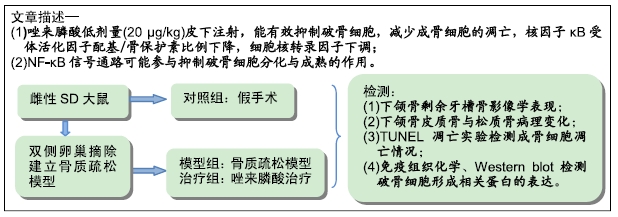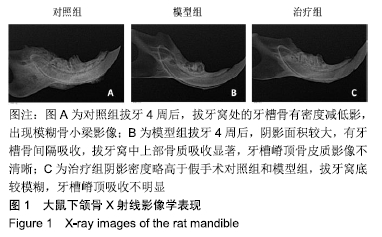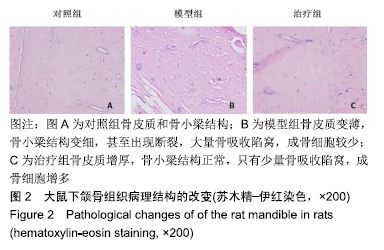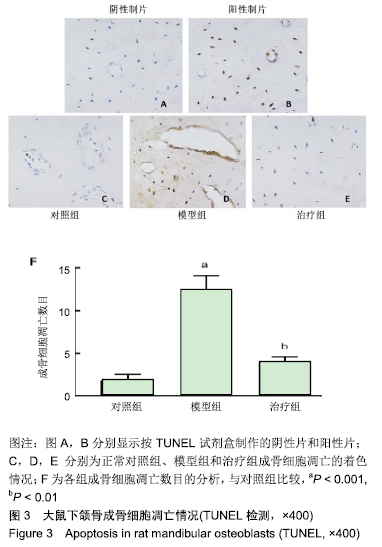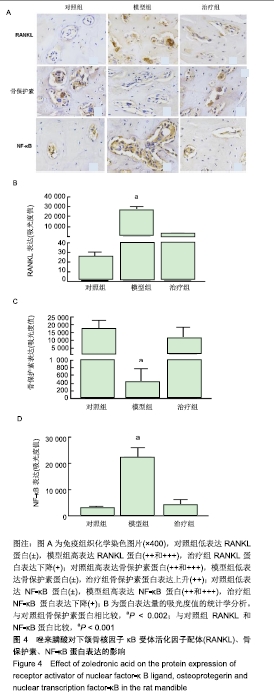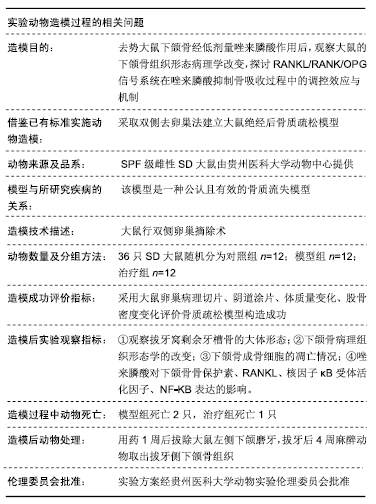[1] CHARATCHAIWANNA A, ROJSIRAPHISA T, AUNMEUNGTONG W, et al. Mathematical equations for dental implant stability patterns during the osseointegration period, based on previous resonance frequency analysis studies.Clin Implant Dent Relat Res.2019; 21(5): 1028-1040.
[2] CHAI J, CHAU AC, CHU FC, et al.Diagnostic performance of mandibular bone density measurements in assessing osteoporotic status.Int J Oral Maxillofac Implants.2014;29(3): 667-674.
[3] KULAR J, TICKNER J, CHIM SM, et al. An overview of the regulation of bone remodelling at the cellular level.Clin Biochem.2012;45(12): 863-873.
[4] ODEN A, MCCLOSKEY EV, KANIS JA, et al.Burden of high fracture probability worldwide: secular increases 2010-2040.Osteoporos Int.2015;26(9): 2243-2248.
[5] CAULEY JA. Osteoporosis: fracture epidemiology update 2016.Curr Opin Rheumatol.2017;29(2): 150-156.
[6] THULKAR J, SINGH S, SHARMA S, et al. Preventable risk factors for osteoporosis in postmenopausal women: Systematic review and meta-analysis.J Midlife Health.2016; 7(3):108-113.
[7] LU J, LIU F, LIU D, et al. Amlodipine and atorvastatin improved hypertensive cardiac hypertrophy through regulation of receptor activator of nuclear factor kappa B ligand/receptor activator of nuclear factor kappa B/ osteoprotegerin system in spontaneous hypertension rats.Exp Biol Med (Maywood).2016; 241(11): 1237-1249.
[8] LIZNEVA D, YUEN T, SUN L, et al. Emerging concepts in the epidemiology, pathophysiology, and clinical care of postmenopausal osteoporosis.Matrix Biology. 2018_S0945053X18301586.
[9] 白璧辉,谢兴文,李鼎鹏,等.我国近5年来骨质疏松症流行病学研究现状[J].中国骨质疏松杂志,2018,24(2):253-258.
[10] SHEN Y, LI YQ, LI SP, et al. Alleviation of ovariectomy- induced osteoporosis in rats by Panax notoginseng saponins. J Nat Med.2010;64(3): 336-345.
[11] KESKINRUZGAR A, BOZDAG Z, ARAS MH, et al. Histopathological Effects of Teriparatide in Medication- Related Osteonecrosis of the Jaw: An Animal Study. J Oral Maxillofac Surg. 2016;74(1):68-78.
[12] ALMUBARAK H, JONES A, CHAISUPARAT R, et al. Zoledronic acid directly suppresses cell proliferation and induces apoptosis in highly tumorigenic prostate and breast cancers.J Carcinog.2011;10:2.
[13] COLEMAN RE, WINTER MC, CAMERON D, et al.The effects of adding zoledronic acid to neoadjuvant chemotherapy on tumour response: exploratory evidence for direct anti-tumour activity in breast cancer. Br J Cancer. 2010;102(7):1099-1105.
[14] SKERJANEC A, BERENSON J, HSU C, et al. The pharmacokinetics and pharmacodynamics of zoledronic acid in cancer patients with varying degrees of renal function.J Clin Pharmacol.2003;43(2): 154-162.
[15] LI EC, DAVIS LE. Zoledronic acid: a new parenteral bisphosphonate. Clin Ther.2003;25(11): 2669-2708.
[16] 吴骁伟,李少晗,曹文娟.唑来膦酸影响单个核细胞向破骨细胞分化及RANK表达的研究[J].中华全科医学,2016,14(10): 1644-1646.
[17] TAI TW, SU FC, CHEN CY, et al. Activation of p38 MAPK-regulated Bcl-xL signaling increases survival against zoledronic acid-induced apoptosis in osteoclast precursors. Bone.2014;67: 166-174.
[18] GREY A, BOLLAND MJ, HORNE A, et al.Duration of antiresorptive activity of zoledronate in postmenopausal women with osteopenia: a randomized, controlled multidose trial.CMAJ.2017;189(36): E1130-E1136.
[19] ALSALLEEH F, KEIPPEL J, ADAMS L, et al. Bisphosphonate- associated osteonecrosis of jaw reoccurrence after methotrexate therapy: a case report.J Endod.2014;40(9): 1505-1507.
[20] HAIDAR A, JØNLER M, FOLKMAR TB, et al. Bisphosphonate (zoledronic acid)-induced osteonecrosis of the jaw. Scand J Urol Nephrol.2009;43(6):442-444.
[21] ZHANG Q, ATSUTA I, LIU S, et al. IL-17-mediated M1/M2 macrophage alteration contributes to pathogenesis of bisphosphonate-related osteonecrosis of the jaws.Clin Cancer Res.2013;19(12): 3176-3188.
[22] CHO DC, KIM KT, JEON Y, et al.A synergistic bone sparing effect of curcumin and alendronate in ovariectomized rat.Acta Neurochir (Wien).2012;154(12): 2215-2223.
[23] RISTOW O, GERNGROSS C, SCHWAIGER M, et al. Does regular zoledronic acid change the bone turnover of the jaw in men with metastatic prostate cancer: a possible clue to the pathogenesis of bisphosphonate related osteonecrosis of the jaw?.J Cancer Res Clin Oncol.2014;140(3): 487-493.
[24] HUANG XL, HUANG LY, CHENG YT, et al. Zoledronic acid inhibits osteoclast differentiation and function through the regulation of NF-kappaB and JNK signalling pathways.Int J Mol Med.2019;44(2): 582-592.
[25] 黄晓林,廖健,洪伟,等.破骨细胞形成过程中唑来膦酸的作用途径及机制[J].中国组织工程研究,2019,23(17):98-103.
[26] ZHOU L, FENG Y, JIN Y, et al.Verbascoside promotes apoptosis by regulating HIPK2-p53 signaling in human colorectal cancer.BMC Cancer.2014;14: 747.
[27] GOMEZ-DE DR, MANG-DE LRMR, ROMERO-PEREZ MJ, et al. Indications and contraindications of dental implants in medically compromised patients: update.Med Oral Patol Oral Cir Bucal.2014;19(5): e483-e489.
[28] KALU DN. The ovariectomized rat model of postmenopausal bone loss. Bone Miner.1991;15(3): 175-191.
[29] MCCANN RM, COLLEARY G, GEDDIS C, et al. Effect of osteoporosis on bone mineral density and fracture repair in a rat femoral fracture model.J Orthop Res.2008;26(3): 384-393.
[30] LUO Y, ZHANG L, WANG WY, et al. Alendronate retards the progression of lumbar intervertebral disc degeneration in ovariectomized rats.Bone.2013;55(2): 439-448.
[31] KHAJURIA DK, RAZDAN R, MAHAPATRA DR. Development, in vitro and in vivo characterization of zoledronic acid functionalized hydroxyapatite nanoparticle based formulation for treatment of osteoporosis in animal model.Eur J Pharm Sci.2015;66: 173-183.
[32] YISHAKE M, YASEN M, JIANG L, et al. Effects of combined teriparatide and zoledronic acid on posterior lumbar vertebral fusion in an aged ovariectomized rat model of osteopenia.J Orthop Res.2018 Mar;36(3):937-944.
[33] GAO Y, LUO E, HU J, et al. Effect of combined local treatment with zoledronic acid and basic fibroblast growth factor on implant fixation in ovariectomized rats.Bone.2009;44(2): 225-232.
[34] WALTER C, AL-NAWAS B, FRICKHOFEN N, et al. Prevalence of bisphosphonate associated osteonecrosis of the jaws in multiple myeloma patients.Head Face Med.2010;6: 11.
[35] QI M, HU J, LI J, et al. Effect of zoledronate acid treatment on osseointegration and fixation of implants in autologous iliac bone grafts in ovariectomized rabbits.Bone.2012;50(1): 119-127.
[36] YASEN M, LI X, JIANG L, et al. Effect of zoledronic acid on spinal fusion outcomes in an ovariectomized rat model of osteoporosis.J Orthop Res.2015;33(9): 1297-1304.
[37] SUNITHA VR, EMMADI P, NAMASIVAYAM A, et al. The periodontal - endodontic continuum: A review.J Conserv Dent.2008;11(2): 54-62.
[38] DIKICIER S, DIKICIER E, KARACAYLI U, et al. Radiodensitometric study for evaluation of bone mineral density around dental implants after zoledronic acid treatment in ovariectomized rats.Med Oral Patol Oral Cir Bucal.2017; 22(3): e377-e382.
[39] HSU PY, TSAI MT, WANG SP, et al. Cortical Bone Morphological and Trabecular Bone Microarchitectural Changes in the Mandible and Femoral Neck of Ovariectomized Rats.PLoS One.2016;11(4): e154367.
[40] JOHNSTON BD, WARD WE.The ovariectomized rat as a model for studying alveolar bone loss in postmenopausal women.Biomed Res Int.2015;2015: 635023.
[41] LIN TH, TAMAKI Y, PAJARINEN J, et al.Chronic inflammation in biomaterial-induced periprosthetic osteolysis: NF-kappaB as a therapeutic target.Acta Biomater.2014;10(1): 1-10.
[42] KIMACHI K, KAJIYA H, NAKAYAMA S, et al. Zoledronic acid inhibits RANK expression and migration of osteoclast precursors during osteoclastogenesis. Naunyn Schmiedebergs Arch Pharmacol.2011;383(3): 297-308.
[43] MARUOTTI N, CORRADO A, NEVE A, et al. Bisphosphonates: effects on osteoblast.Eur J Clin Pharmacol.2012;68(7): 1013-1018.
[44] REINHOLZ GG, GETZ B, PEDERSON L, et al. Bisphosphonates directly regulate cell proliferation, differentiation, and gene expression in human osteoblasts. Cancer Res.2000;60(21): 6001-6007.
|
